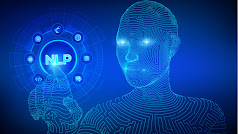A Journey from 20th Century Origins to 21st Century Peaks of AI
The story of Artificial Intelligence( AI) stretches across numerous decades and is marked by emotional technological advancements, significant exploration discoveries, and colorful practical uses. The idea behind AI, which is that machines can imitate mortal- suchlike intelligence and perform tasks that humans generally do, has its roots in ancient myths and stories. The systematized development of AI as a subject of study began in the 20th century.
Beginning Of AI
The inception of the study of Artificial Intelligence (AI) has its
origins in the mid-20th century. In 1956, a group of researchers organized the
Dartmouth Workshop, a seminal event that marked the official beginning of AI as
a field of study. During this workshop, John McCarthy, Marvin Minsky, Nathaniel
Rochester, and Claude Shannon, among others, brainstormed and discussed the
potential for creating machines that could simulate human intelligence.
Focus
The researchers aimed to develop computer programs and systems
capable of tasks such as problem-solving, natural language understanding,
learning, and decision-making — tasks that traditionally required human
cognitive abilities. This marked the formalization of AI research and led to
the exploration of various approaches, including symbolic reasoning, machine
learning, and neural networks.
Winter's For AI
Over the subsequent decades, AI research faced periods of intense
enthusiasm and setbacks, commonly referred to as "AI winters."
These were times when progress didn't meet the high expectations set by the
initial visionaries. However, breakthroughs in algorithms, increased computing
power, and the accumulation of data led to significant advancements in recent
years. These include achievements in areas like computer vision, natural
language processing, robotics, and autonomous systems.
The 21st century has witnessed remarkable progress and
breakthroughs in the field of Artificial Intelligence (AI).
- Deep Learning and Neural Networks: Deep learning, a subset of machine learning, has gained immense traction. Neural networks, particularly deep neural networks with many layers (hence the term "deep"), have demonstrated exceptional performance in tasks such as image and speech recognition, natural language processing, and game playing. This progress was facilitated by the availability of massive datasets and powerful hardware, as well as innovative training techniques.
- Computer Vision: AI has achieved significant milestones in computer vision,
enabling machines to recognize objects, scenes, and even emotions in images and
videos. Convolutional Neural Networks (CNNs) have revolutionized image
analysis, powering applications like facial recognition, object detection, and
self-driving cars.
- Natural Language Processing (NLP): NLP has seen
unprecedented advancements, with models like transformer-based architectures
leading the way. These models, such as BERT and GPT, have exhibited human-level
or even superhuman performance in tasks like text generation, translation,
sentiment analysis, and question answering.
- Autonomous Systems: AI has enabled significant progress in robotics and autonomous
systems. Self-driving cars have become a reality, with companies like Tesla and
Waymo testing autonomous vehicles on public roads. Robots are being used in
various industries, from manufacturing to healthcare.
- Healthcare and Medicine: AI has made a substantial impact in healthcare, assisting in
diagnosis, drug discovery, and personalized treatment plans. Machine learning
algorithms can analyze medical images, predict disease outbreaks, and help
identify potential drug candidates.
- AI in Science: AI is accelerating scientific research by aiding in data
analysis, simulating complex systems, and discovering patterns in large
datasets. This has implications across disciplines, from astronomy to molecular
biology.
- Conversational AI and Virtual Assistants: Virtual
assistants like Siri, Alexa, and Google Assistant have become ubiquitous,
providing natural language interfaces to technology and enabling hands-free
interactions.
The 21st century has seen AI move from theoretical concepts to practical, impactful applications across various domains. These advancements are fueled by the convergence of increased computational power, larger datasets, innovative algorithms, and a growing community of researchers and developers dedicated to pushing the boundaries of AI
Need some help for continue my study plz:
Usdt wallet: TCGU4Tuj9FsVbftRVQDbioEkcNqxe9Ms61
Another usdt wallet: 0x07a170ab2fb5a2008065bed8fd13cb12e2e9c94f
Btc wallet : 1JhNtCmS7EwWECRgRCoa9AB8KKnRpppYAy
Btc wallet: 0x07a170ab2fb5a2008065bed8fd13cb12e2e9c94f
technology.
















0 Comments